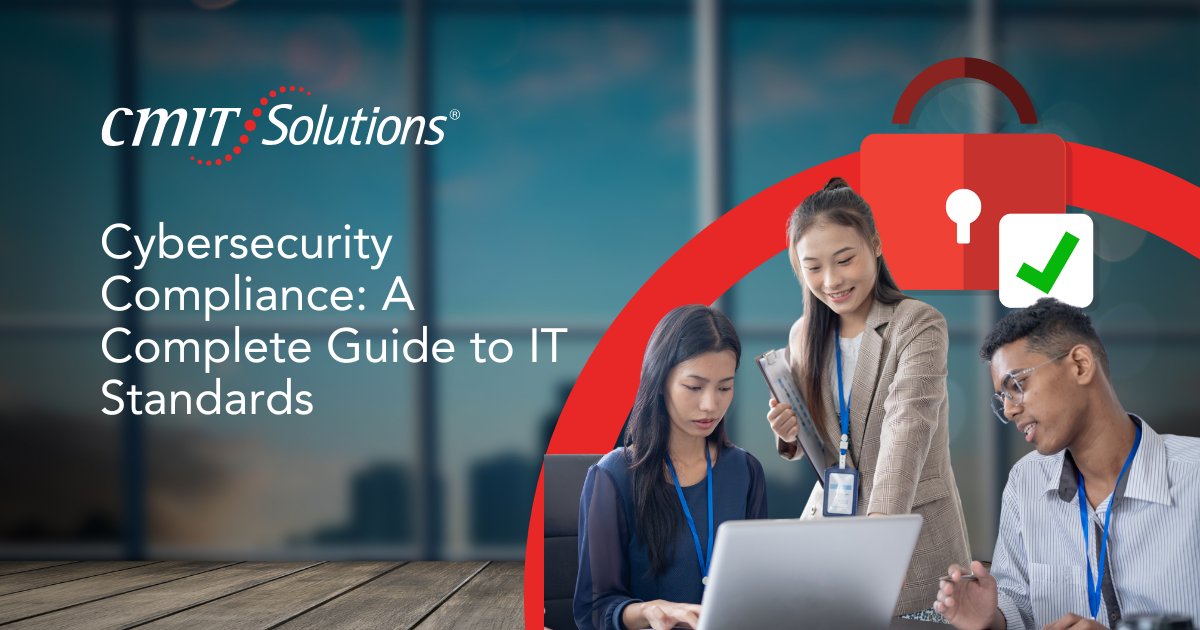In today’s digital age, businesses face increasing threats from cybercriminals who exploit vulnerabilities in IT systems. Cybersecurity compliance plays a crucial role in protecting sensitive data, mitigating risks, and ensuring adherence to industry regulations. Failing to comply with established standards can result in legal consequences, financial losses, and reputational damage.
With evolving regulations and increasing cyber threats, organizations must take proactive measures to secure their IT infrastructure. This guide provides a comprehensive overview of cybersecurity compliance, including key standards, best practices, and strategies for maintaining compliance in an ever-changing landscape.
Understanding Cybersecurity Compliance
Cybersecurity compliance refers to the process of aligning IT security measures with industry regulations and legal requirements. Businesses must implement security frameworks that protect sensitive information, ensure privacy, and prevent unauthorized access. Compliance involves adhering to standards that govern data handling, encryption, risk management, and incident response.
Compliance is not just about meeting legal obligations; it is also about maintaining trust with customers and stakeholders. Organizations that follow cybersecurity best practices demonstrate their commitment to safeguarding data, which helps them build a stronger reputation in the marketplace.
Key Cybersecurity Compliance Standards and Regulations
Different industries are subject to various compliance regulations, depending on the type of data they handle. Understanding these standards is essential for businesses to implement the necessary security measures.
General Data Protection Regulation (GDPR)
GDPR applies to businesses that process personal data of European Union citizens. It mandates organizations to ensure data privacy, obtain user consent, and implement strict security measures to protect customer information. Non-compliance can result in heavy fines and legal actions.
Health Insurance Portability and Accountability Act (HIPAA)
HIPAA is a U.S. regulation that governs the handling of patient health information. It requires healthcare providers, insurers, and their business associates to implement safeguards that prevent data breaches and unauthorized disclosures of medical records.
Payment Card Industry Data Security Standard (PCI DSS)
Businesses that handle credit card transactions must comply with PCI DSS to protect payment data. The standard requires encryption, access controls, and network security measures to prevent fraudulent activities.
NIST Cybersecurity Framework
The National Institute of Standards and Technology (NIST) provides a flexible framework that organizations can adopt to improve their cybersecurity posture. This framework outlines best practices for identifying, preventing, detecting, and responding to cyber threats.
Federal Risk and Authorization Management Program (FedRAMP)
FedRAMP is a compliance framework for cloud service providers working with U.S. government agencies. It ensures that cloud solutions meet strict security requirements and provide a secure environment for government data storage.
Adhering to these regulations helps businesses reduce risks, avoid penalties, and strengthen their cybersecurity measures.
Why Cybersecurity Compliance is Important
Protecting Sensitive Data
Data security is a priority for businesses handling personal, financial, and proprietary information. Compliance frameworks help organizations implement encryption, access controls, and secure storage solutions to prevent unauthorized data access.
Avoiding Legal and Financial Consequences
Regulatory violations can result in substantial fines and legal actions. Non-compliance with GDPR, HIPAA, or PCI DSS can lead to lawsuits, loss of business licenses, and reputational damage. Businesses must take compliance seriously to avoid costly penalties.
Building Trust with Customers and Partners
Consumers expect businesses to protect their personal data. Organizations that comply with cybersecurity regulations demonstrate their commitment to privacy, enhancing customer confidence and long-term loyalty. Compliance also reassures business partners that data shared within collaborations remains secure.
Reducing Cybersecurity Risks
Cyberattacks such as ransomware, phishing, and insider threats continue to rise. Implementing compliance measures helps businesses identify vulnerabilities, strengthen security defenses, and reduce the likelihood of cyber incidents.
Consequences of Non-Compliance
Failing to meet cybersecurity compliance standards exposes businesses to a range of negative consequences.
Legal penalties can be severe, with fines reaching millions of dollars for violations under GDPR or HIPAA. Additionally, businesses that suffer data breaches due to non-compliance often lose customer trust, leading to decreased sales and reputational damage.
Operational disruptions are another major consequence. Cyberattacks resulting from weak security protocols can lead to downtime, lost revenue, and compromised data integrity. Without proper compliance measures in place, businesses struggle to recover from security incidents.
Insurance costs can also increase for non-compliant businesses. Cyber insurance providers assess an organization’s security posture when determining coverage and premiums. A history of non-compliance and weak cybersecurity measures can result in higher costs or denial of coverage.
Steps to Achieve Cybersecurity Compliance
Conducting Risk Assessments
Regular risk assessments help businesses identify vulnerabilities in their IT infrastructure. By evaluating potential threats and weaknesses, organizations can implement targeted security measures to mitigate risks.
Implementing Strong Access Controls
Restricting access to sensitive data minimizes the risk of insider threats and unauthorized access. Role-based access control (RBAC) ensures that employees only have access to the information necessary for their job functions. Multifactor authentication (MFA) adds an extra layer of security to prevent unauthorized logins.
Encrypting Data
Data encryption protects information both at rest and in transit. Implementing encryption protocols ensures that even if data is intercepted, it remains unreadable to unauthorized individuals.
Developing an Incident Response Plan
A well-defined incident response plan enables businesses to act quickly in the event of a cybersecurity breach. This plan should outline procedures for identifying, containing, mitigating, and recovering from security incidents. Regular testing and employee training ensure that the response team is prepared to handle cyber threats effectively.
Providing Employee Cybersecurity Training
Human error is a leading cause of data breaches. Educating employees on cybersecurity best practices, such as recognizing phishing attempts and using strong passwords, helps create a security-conscious workforce. Ongoing training ensures that staff remains informed about emerging threats and compliance requirements.
Continuous Monitoring and Compliance Audits
Cybersecurity compliance is not a one-time effort. Businesses must continuously monitor their security systems, conduct regular audits, and update policies to stay aligned with evolving regulations. Implementing automated security monitoring tools helps detect anomalies and potential breaches in real-time.
Creating a Cybersecurity Compliance Program
Establishing a compliance program requires a structured approach. Organizations should begin by defining their compliance objectives and aligning them with industry regulations. A dedicated compliance team or officer can oversee implementation, ensuring that security measures meet regulatory requirements.
Cross-department collaboration is essential for maintaining compliance across an organization. IT teams, legal departments, and executive leadership should work together to integrate cybersecurity policies into business operations.
Regular policy reviews and updates help businesses stay ahead of regulatory changes. As cyber threats evolve, organizations must adapt their security measures to remain compliant and resilient against emerging risks.
Emerging Trends in Cybersecurity Compliance
With advancements in technology, cybersecurity compliance continues to evolve. Artificial intelligence and machine learning are increasingly used for threat detection, security monitoring, and compliance enforcement. These technologies help organizations identify potential risks and automate responses to security incidents.
Zero Trust Architecture (ZTA) is gaining traction as a cybersecurity model. Instead of assuming that users inside the network are trustworthy, Zero Trust verifies every access request and enforces strict authentication measures. Businesses implementing Zero Trust strategies enhance their security posture while maintaining compliance.
Data privacy laws are expanding globally, with regulations like the California Privacy Rights Act (CPRA) and Brazil’s General Data Protection Law (LGPD) shaping the future of cybersecurity compliance. Businesses must stay informed about legislative updates and adapt their policies to meet evolving requirements.
Final Thoughts on Cybersecurity Compliance
Cybersecurity compliance is a vital component of modern business operations. Organizations that adhere to regulatory standards protect sensitive data, reduce cyber risks, and avoid legal penalties. Implementing security best practices, conducting risk assessments, and providing employee training are key steps toward achieving compliance.
As cyber threats continue to evolve, businesses must remain proactive in their approach to cybersecurity. Continuous monitoring, policy updates, and collaboration with cybersecurity experts help organizations stay ahead of potential risks.
For businesses seeking professional guidance, CMIT Solutions of Charleston provides comprehensive cybersecurity compliance services, ensuring that organizations meet industry standards while maintaining a secure IT environment.






